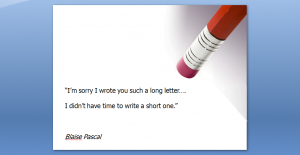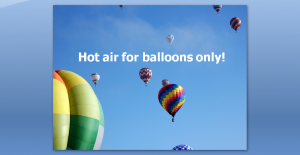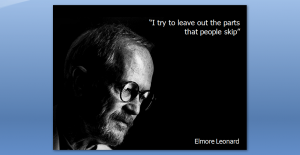Directness.
Directness should be a goal – at least one goal – of our presentations; speaking and writing clearly, simply and efficiently. This doesn’t meaning “dumbing down” what we say. It doesn’t mean being overly short. It doesn’t mean use dry, boring language.
It means writing and speaking in terms that are easily grasped by and touch our audience. Contrary to “dry,” “boring,” and “short,” this requires we be a bit expressive and colorful, and use vivid examples. This might actually require a few more words, but in return we create a sharp image in the minds of our audience to help them better understand our point.
There are many reasons why our communication is less than direct.
In some cases, we simply haven’t thought through the essence of what we have to say. Recall the words of the French mathematician and philospher, Blaise Pascal: “I’m sorry I wrote you such a long letter, I didn’t have time to write a short one.” No question about it, direct communication takes thought and effort. It takes time.
In other cases, we HAVE thought through our message, but we’re uncomfortable with it. We know our audience won’t like what we have to say (“I don’t need more bad news!”), or we think they won’t be sufficiently impressed (“Is that all you have to say?”). As a result we twist, inflate and extend our message into an unrecognizable form, hoping our audience will accept that we know what we’re talking about, rather than make the effort to decode our jumbled statements.
I don’t mean to suggest we do this in a calculated, deceptive manner. I think it mostly just happens – innocently, subconsciously, without plan. But by whatever mechanism, IT HAPPENS! I see it all the time in presentations I view (and read). Well-intentioned professionals high in the air, circling broadly around their message, their audiences scratching their heads, waiting for them to land, and wondering where that will be. What’s this all about? Why does it matter?
So, how do we avoid this?
Well, awareness is the first step to solving any problem. Looking more critically at what we write and say. Making the time to do some quality editing. And committing to do another round (of editing), once we truly think we’re done. Pausing before we speak – to organize our ideas. Speaking slowly. READING more! Finding a model writer or speaker to emulate (I like Seth Godin and Garr Reynolds).
These steps are so obvious and simple, they are easily dismissed: “I already do that.” But do we? Don’t underestimate the impact these steps can have, or the importance of doing so. Our audiences’ willingness to do what we need is a direct function of the trust they have in us. That, in turn, is strongly tied to the clarity and directness of our message.
Slow down. Think. Organize your ideas. Think some more. Then express yourself. This formula applies to both our written and spoken words. Less is more. Simplicity rules.
For fun, here are a few slides I’ve used while speaking to this point…..



